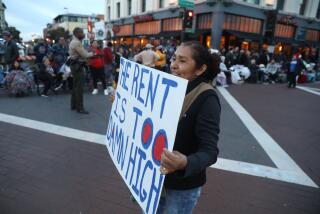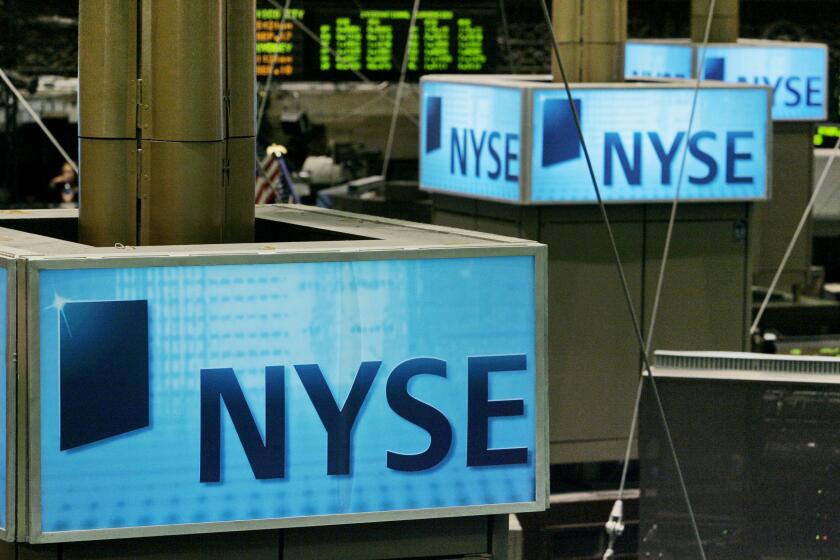Column: Voters are finally noticing that Bidenomics is working

The turning point in Americans’ perception of the economy — that despite months of doom-colored predictions of a looming recession — may have occurred on Jan. 25.
That was the day that Fox Business economic commentator Larry Kudlow, a former official in the Trump White House and consistent dispenser of grim economic predictions during President Biden’s term, went on Fox’s “America Reports” telecast and acknowledged that the Biden economy was, you know, good.
That day, government figures had been released showing a 3.3% annual increase in the gross domestic product for the fourth quarter of 2023, on top of a 4.9% growth rate for the third quarter.
Instead of contracting, the economy has continued to grow....Inflation has come down significantly. ...The labor market is healthy.
— Treasury Secretary Janet Yellen
Candidly, if a bit glumly, Kudlow stated, “It was a good quarter, don’t get me wrong, and the last quarter was a good quarter, 4.9.” Biden, he said, “gets his due. If I were he, I’d be out slinging that hash too, no problem.” Asked by the host if this meant that the economy was not as bad as he had been saying, he answered, “I would say, probably, I would agree.”
Fox being Fox, Kudlow couldn’t resist sticking the shiv in: “Wages are rising more slowly than prices,” he said, which doesn’t happen to be true: Wages and benefits for rank-and-file workers have grown faster than prices throughout the post-pandemic period.
Get the latest from Michael Hiltzik
Commentary on economics and more from a Pulitzer Prize winner.
You may occasionally receive promotional content from the Los Angeles Times.
The bottom line, however, is that if the bad-economy camp has lost even Larry Kudlow, they’re on the wrong side of the argument.
The truth is that the Biden economy (“Bidenomics,” if you prefer) has been chugging along for some time. The fundamental question that has circulated about his record is not about the economy’s strength, but about why he hasn’t gotten credit for it.
Sentiment may now finally be shifting. In January, the University of Michigan saw the largest two-month jump in its consumer sentiment index since the end of the Gulf War in 1991. News coverage, which throughout 2023 relentlessly forecast a recession, now touts the prospect of a “soft landing” — that is, a successful battle against inflation without an increase in the unemployment rate or a general economic slowdown.
As it happens, some news outlets seem reluctant to give up on the old theme. “A soft landing, for now,” was Politico’s headline on a mid-December roundup of economic statistics including unemployment below 4% and inflation having been brought down to 3%.
Following a tradition of know-nothing pronouncements at the World Economic Forum, JPMorgan CEO Jamie Dimon declares Trump right about immigration, tax cuts, NATO and the economy.
But even White House aides, who last year were reported to be uneasy at trumpeting the term “Bidenomics” in the president’s reelection campaign, are now reported to be hoping that “a strong economy will sell itself to Americans,” according to NBC News.
Administration officials have been trying to spread the word. “Instead of contracting, the economy has continued to grow,” Treasury Secretary Janet Yellen told the Economic Club of Chicago on Jan. 25. “It now produces far more goods and services than it did before the pandemic. ... Inflation has come down significantly. ... The labor market is healthy.” The unemployment rate, she noted, “has been below 4% for 23 months now, a stretch that has not been seen during the last 50 years.”
Moreover, Yellen said, the current recovery has been “the fairest recovery on record,” with wage and employment gains for the middle class and demographic groups such as Black and Hispanic workers. And the U.S. recovery from the pandemic has outstripped those of other developed countries: “The increase in real wages is unique to our country’s recovery: in other economies, real wages have declined since 2019.”

Unionized workers have been among the leading beneficiaries of economic growth, achieving strong improvements in wages and working conditions at unionized auto plants and United Parcel Service.
Some economic commentators have been perplexed at Americans’ failure to recognize the good news about the Biden economy. “Something weird is happening in America,” John Burn-Murdoch of the Financial Times observed on Dec. 1.
Even though GDP growth for the third quarter had just been pegged at higher than 4.9% and job growth remained strong, Burn-Murdoch wrote, “the public is up in arms about economic conditions, with consumer confidence dropping to a six-month low. There really is no pleasing some people.”
The disconnect should not have been so mysterious, however. As I’ve noted in the past, changes in economic conditions, especially improvements, often take time — even many months — to filter into public awareness. People will typically think that a recession is still in full cry long after a recovery is underway.
Biden’s economy is much better than Trump’s was, so why does he get lower marks for his economic management?
This happens partly because the news media keep projecting gloom, because bad news always sells better than good news and no reporters want to get caught out as Pollyannas if conditions worsen again.
Marketers of economic nostrums such as cryptocurrency and gold investments flood the airwaves with come-ons, and they don’t win customers by proclaiming that sunny days lie ahead. Opposition politicians don’t win votes by praising incumbents for implementing effective economic policies.
Nor are opinion polls the best way to gauge people’s feelings about the economy; polls consistently show Americans to be discontented with economic policies, but their spending shows them to be profoundly optimistic. That said, the public’s feelings about the economy are often tempered by the fear that things could turn down again in the blink of an eye.
One source of confusion about economic affairs is that public perceptions of the economy are generally snapshots of longer-term trends, and are therefore inevitably distorting. Professionals aren’t immune from the same error.
Federal Reserve and Treasury officials have been consistently pilloried for wrongly predicting that the inflation that emerged in late 2020 would be “transitory.” Indeed, the Fed, smarting from this criticism, arguably has kept interest rates high for longer than has been warranted.
Yet, viewing things in a rearview mirror, team transitory was right. As Kevin Drum has observed, the painful inflationary era of the 1970s and 1980s — which peaked at an annualized 12% in 1974 — actually began in the late 1960s, when the annual rate first exceeded 5%, and persisted into the 1990s, when the rate fell below 3%. That’s more than two decades. (The measure at issue is personal consumption expenditures excluding food and energy, the Fed’s preferred metric of overall inflation.)
The UAW’s great new contracts with GM, Stellantis and Ford show that union solidarity and concrete goals bring major victories for workers for the first time in decades.
By contrast, the recent bout of inflation that supposedly is a black mark against the Biden administration began in mid-2020 (under Trump), peaked at an annualized 6% at the beginning of 2022, and has now fallen to 2%. The period of high inflation lasted less than three years, and never came close to the 1970s peak. In other words, it was the definition of “transitory.” Yet people remember it as a long stretch of relentless price increases.
People also imagine inflation today to be as high as it was in 2022, yielding persistently high prices. But they may not yet have fully recognized the extent to which overall inflation has moderated or that some prices are coming down.
The average gasoline price nationwide is $3.15 per gallon of regular, down from the peak of $4.54 reached in mid-June 2022, according to the AAA; across the Midwest, average prices have fallen below $3 per gallon. Prices of staple foods, many proteins and vegetables are falling.
In political terms, the economy is a moving target. There is always something for naysayers and pessimists to point at to make the case that all is not well. The generally good news in job growth, with the blowout report of 353,000 new jobs in January and months of gains in manufacturing, is confounded by employment bloodbaths among tech and media firms.
But there’s certainly a case to be made that Biden has been an effective steward of the U.S. economy — and one who has succeeded in pushing to favor ordinary Americans through initiatives such as infrastructure spending. That’s a big change from Trump, whose most significant economic achievement was an enormous tax cut for corporations and the wealthy.
Despite all that, opinion polls show that Biden still gets low marks for his management of the economy. But recognition of the truth may soon come his way.
More to Read
Get the latest from Michael Hiltzik
Commentary on economics and more from a Pulitzer Prize winner.
You may occasionally receive promotional content from the Los Angeles Times.










